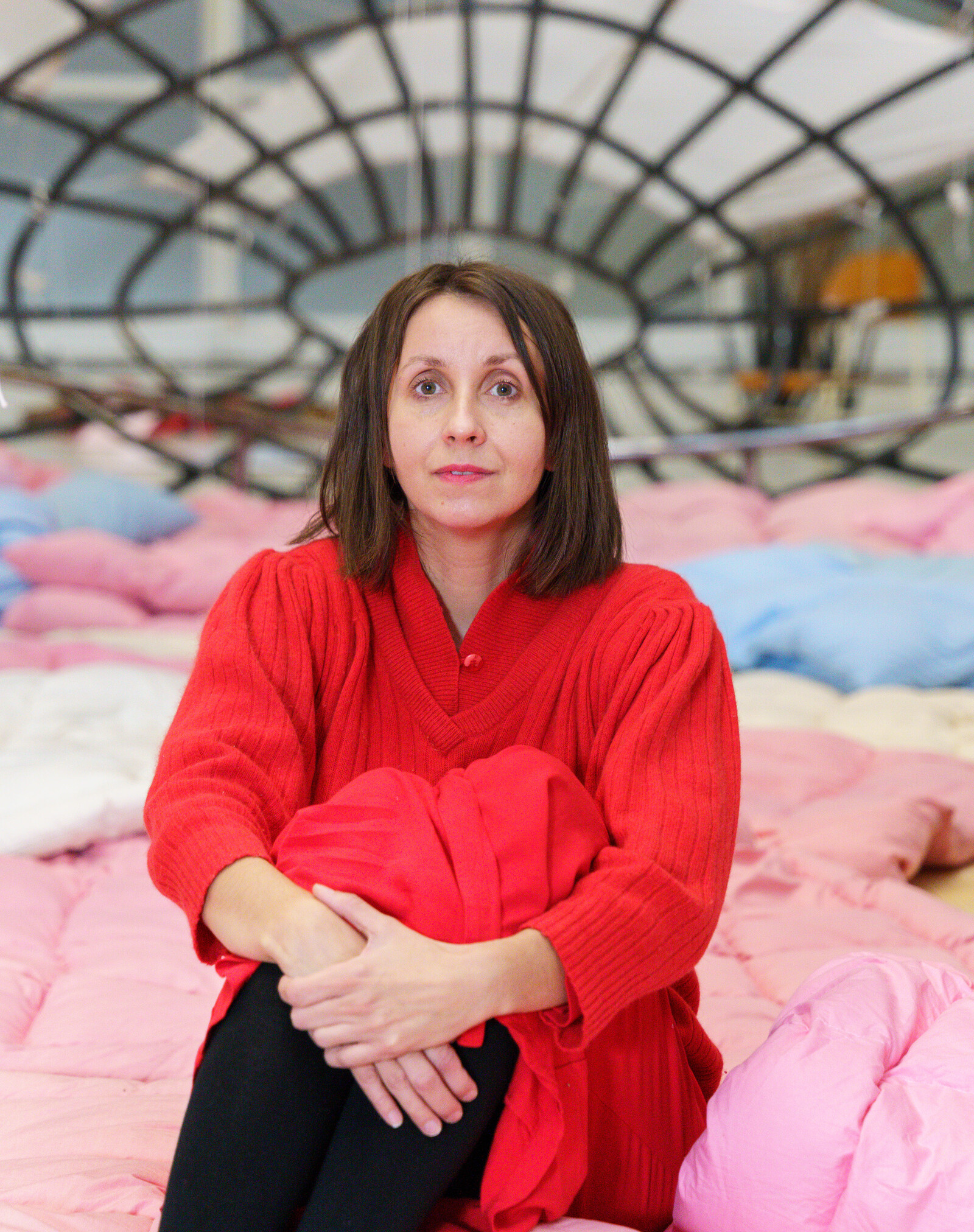The heart of a giraffe in captivity is twelve kilos lighter
April 20–November 24, 2024
30100 Venice
Italy
The heart of a giraffe in captivity is twelve kilos lighter tells the story of Lenka the giraffe, drawing on the history of Czechoslovakia’s acquisition of animals from the Global South. Interpreted through contemporary ecological and decolonial perspectives, the project builds a space for imagining a different way of relating to nature.
Lenka the Giraffe was captured in Kenya in 1954 and transported to Prague Zoo to become the very first Czechoslovak giraffe. She survived only two years in captivity, after which her body was donated to the National Museum in Prague where it was exhibited as a museum artefact until 2000. The heart of a giraffe in captivity is twelve kilos lighter, Eva Koťátková’s collaborative project for the Czech representation at the 60th Venice Biennale, reimagines Lenka’s story as a poetic, embodied encounter for the audience, invited collaborators and the artist, but also as a place of critical intervention in the relationship between institutions and the natural world.
Kot’átková’s collaborative project aims to question hierarchies, violence and extractive practices embedded in the way we encounter, view, and learn about animals, suggesting different modes of engagement where care, imagination and emotion are as important as historical narrative. Alongside the collaboration with artists and composers Himali Singh Soin and David Soin Tappeser (Hylozoic/Desires), Lenka’s story is also interpreted by children, educators and older people, who were Lenka’s contemporaries; with the installation conceived of as a collective body facilitating multiple forms of storytelling. With a contribution by the collective Gesturing Towards Decolonial Futures, The heart of a giraffe… builds a space where belonging can be formed through emotions, touch and ecological relations instead of fixed notions of identity and nation.
The project is curated by Hana Janečková, Assistant Professor of Contemporary Art at the Academy of Fine Arts, Prague. The commissioner of the project is Michal Novotný, Director of the Collection of Art after 1945 at the National Gallery Prague. It will be presented by the National Gallery Prague at the Czech and Slovak Pavilion in Giardini, alongside the artist Oto Hudec, who represents the Slovak Republic. His project Floating Arboretum, which also works with ecological narratives, is curated by Lýdia Pribyšová.
Eva Koťátková
As one of the most significant Czech artists of her generation, Eva Kot’átková has engaged with alternative educational models, embodied participation and the ways we relate to the natural world through critical institutional practice in contemporary art. Since the beginning of her career, she has built a powerful and complex oeuvre, both as artist, educator and activist drawing on a play, personal and embodied memory, future orientated radical imagination, social utopias and practices of care to ask what might constitute better worlds. She is a co-founder of the Institute of Anxiety, the magazine Krunýř (The Shell) and is engaged in several educational projects such as School of Imagination and Futuropolis. Her solo exhibitions have taken place at Nottingham Contemporary (2023); Arter (Istanbul, 2023); National Gallery Prague and CAPC Bordeaux (both 2022), Kunstverein Hamburg (2018); Pirelli Hangar Bicocca (Milan, 2018); Belvedere 21 (Vienna, 2017); Centre d’art contemporain (Pougues-les-Eaux, 2016) among others. Recently she has presented work at the Metropolitan Museum of Art (2018), the 16th Istanbul biennale (2019) and documenta fifteen (2022).
Hana Janečková
Hana Janečková is a researcher and curator working on the politics of the body, ecology, critical curating and decolonial feminism in recent and contemporary art. She is Assistant Professor of contemporary art at the Academy of Fine Arts, Prague (AVU). She was a Fulbright-Masaryk Scholar at Rutgers University and Brooklyn Museum (2021-2022). Her recent selected projects include Natural Red in Tooth and Claw (Tranzit SK, 2023) collective monographs Animal Touch (ArtMap 2021, ed., with Eva Kot’átková) and Multilogues on the Now (2022), Radicalizing Care: Feminist and Queer Activism in Curating (Academy of Art, Vienna, 2021) and Diagnosis, Artalk Revue (2018, ed.) Her first monograph Feminist Alliances and Politics of the Body is forthcoming.
Michal Novotný
Michal Novotný is the Director of the Collection of Art after 1945 at the National Gallery in Prague and commissioner of the 2024 Czech Pavilion at the Venice Biennale. He teaches at the Academy of Arts, Architecture and Design in Prague. His research focuses on the identity of Central and Eastern European art and how the notion of quality in art is constructed regarding the material conditions of its production and exhibition. His recent projects include a new retrospective of the collection 1939–2021; End of the Black-and-White Era (with Eva Skopalová and Adéla Janíčková, National Gallery Prague, 2023), collaboration with Center Pompidou on the festival MOVE (National Gallery Prague, Center Pompidou, Paris 2022) and Post-Digital Intimacy (National Gallery Prague, 2021).
Himali Singh Soin & David Soin Tappeser (Hylozoic/Desires)
Hylozoic/Desires is a multi-media performance duo whose work combines experimental poetry and original music in order to conjure borgesian, speculative futures. H/D aspire toward a flat ontological ether in which all forms of life—stone, spirit, machine or human—are equal. Himali Singh Soin is a writer and artist based between London and Delhi. She uses metaphors from outer space and the natural environment to construct imaginary cosmologies of interferences and entanglements. David Soin Tapesser is a drummer, composer and performance artist based between London and New Delhi. His practice centres around ideas of time, interdependence and alterity. His performances and compositions use rhythm to codify, manipulate and deconstruct linear perceptions of time.
Gesturing Towards Decolonial Futures
The GTDF collective (decolonialfutures.net) serves as a working space where researchers, artists, educators, students, social justice and environmental activists and ancestral/Indigenous knowledge keepers can collaborate to create and engage research, artistic, pedagogical and visual mapping experiments in education.




